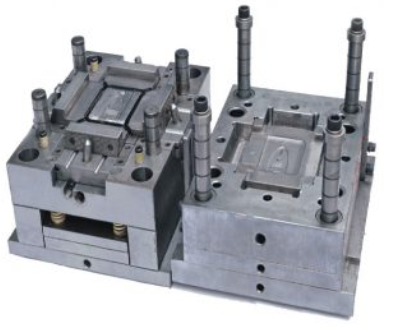A lot of people might confused what is injection mold cooling system? The design of injection mold cooling system is often considered a secondary problem. Today, this article will show you everything you need to know about injection mold cooling system, as well as its temperature, principle, process and conformal chanels.
What is Injection Molding Cooling System?
Injection molding cooling temperature is very important for mold design. The correct design of the cooling system of plastic injection molds can not only shorten the circle molds and improve the production efficiency but also meet the needs of modern engineering plastic precision injection parts. If the design of cooling system is not reasonable, it will produce internal stress for small plastic parts and deformation or even stress cracking for large plastic parts with thin walls. Moreover, insufficient cooling will lead to a longer molding cycle and lower production efficiency.

The Temperature Problems About Injection Moldingt Cooling System
Determining the size of the cooling system is no doubt not a simple task. Generally speaking, mold designers are not familiar with some aspects. This kind of work is very complicated, even in the technical literature, it is difficult to find a satisfactory answer to some questions. Some of the heat conduction equations are well known and can now be solved by computers and pocket programmable calculators.
However, the situation encountered in practical problems often brings difficulties to the solution of the problem. For example, the cavity wall is periodically heated by the injected high-temperature plastic melt. As a result, the temperature difference between the mold and the cooling water increases, and the cooling effect becomes stronger. After the mold is opened and the plastic part is ejected, the cavity is cooled by the surrounding air. Therefore, the temperature of the cavity surface changes periodically.
The solution of the problem becomes more difficult, because the injected high-temperature plastic melt only contacts with a part of the mold cavity, while the whole mold is cooled by the cooling water of the cooling channel. In addition, the cooling water is heated when passing through the cooling channel of the mold, thus changing the temperature difference between the mold and the cooling water.
Principle Of Injection Mold Cooling System
The principle of cooling system is that the temperature of plastic parts is rapidly reduced in a unified and continuous way, and the injection parts can not be taken out of the mold during the cooling process until the cooling is sufficient, and then the injection parts are taken out of the mold. Any hot spot will delay the injection cycle of injection molded parts, which may lead to warpage and depression of injection molded parts after molding, and may damage the surface quality of plastic parts. Rapid cooling is to take away the heat of the injection part through the passage of the coolant in the mold. The speed and uniformity of the cooling effect are determined by the fluid passage and the speed of the cooling fluid passing through it.
The Process Of Injection Mold Conventional Cooling Channel
In the traditional mold, the cooling water channels generate an internal network by cross-drilling, and the flow velocity and direction are adjusted by the built-in fluid plug. The application of metal 3D printing technology in mold cooling water channel manufacturing breaks through the limitation of cross-drilling mode on cooling water path design. Now, mold design enterprises can design more close to the mold cooling surface of the follow-up waterway, they have smooth corners, faster flow and higher cooling efficiency.
The conventional cooling channel in the mold is realized by secondary processing. Through cross-drilling, the internal network of the straight pipe is generated, and the flow velocity and direction are adjusted by the built-in fluid plug. This method has its limitations. The shape of the water network is limited, so the cooling channel is far away from the surface of the mold, which makes the cooling efficiency low. Not only that, but also have to face the additional processing and assembly time, as well as the risk of blind spot channel network may be blocked; moreover, in complex cases, in order to reserve cooling channel processing, the mold also needs to be cut into several parts to manufacture, and then spliced into a whole mold, which leads to additional manufacturing links, and will shorten the life of the mold.
Conformal Cooling vs Conventional Cooling
The difference between conformal cooling mode and traditional cooling mode lies in the cooling water. The shape of the channel changes with the shape of the injection molding products, which is no longer linear. This cooling channel solves the problem that the distance between the traditional cooling channel and the surface of the mold cavity is not consistent, which can make the injection molding products get uniform cooling, and the cooling efficiency is higher.
